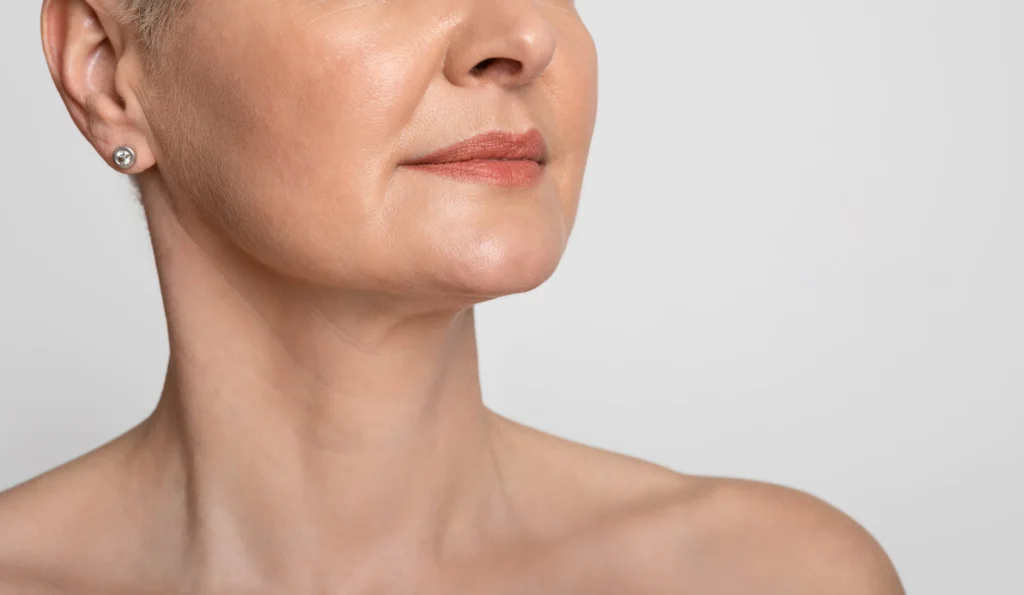Neck aging is a natural part of the aging process, but for some individuals, its effects go beyond aesthetics—interfering with comfort, posture, and even respiratory function. While neck lifts are often perceived as cosmetic procedures, there are legitimate medical reasons that make this surgery appropriate for certain patients. Understanding the anatomical causes of neck aging can help clarify why a neck lift may sometimes be more than just a vanity decision.
The Anatomy of Neck Aging
The neck is composed of a complex interplay of muscles, fat, skin, and connective tissue. As we age, several anatomical changes can occur:
- Platysma Muscle Banding
The platysma is a thin, superficial muscle that extends from the jawline down the neck. With age, the platysma often weakens and separates in the midline, creating vertical bands and reducing muscle support for the overlying tissues. - Skin Laxity
Collagen and elastin production decline with age, leading to thinner, less elastic skin. This causes sagging and wrinkling of the neck area. - Submental Fat Accumulation
Fat can accumulate beneath the chin and in the upper neck (submental region), creating a “double chin” or loss of definition along the jawline. - Loss of Cervicomental Angle Definition
The youthful angle between the chin and neck (cervicomental angle) flattens with age due to tissue sagging, fat deposits, and muscle laxity, impacting both aesthetics and function. - Deep Tissue Descent
Deeper structural changes include the descent of fascia and ligaments in the neck and lower face, contributing to an aged or “turkey neck” appearance.
When Is a Neck Lift Medically Appropriate?
While many patients pursue neck lifts for cosmetic enhancement, certain conditions may make this surgery medically appropriate:
- Severe Platysmal Banding Leading to Pain or Discomfort
Prominent or tight platysmal bands can cause discomfort, restrict movement, and lead to musculoskeletal tension in the neck and upper back. - Postural Problems or Cervical Spine Strain
In some patients, excessive skin or fat in the neck area alters posture and head positioning, which can contribute to chronic neck or shoulder pain. - Obstructed Breathing or Sleep Apnea
In rare cases, submental fat or tissue sagging can contribute to restricted airflow during sleep, exacerbating snoring or obstructive sleep apnea symptoms. - Skin Irritation or Infections
Excess neck skin can trap moisture, leading to recurrent skin irritation, rashes, or fungal infections—particularly in older patients with reduced mobility. - Reconstructive Indications Post Weight Loss or Trauma
Individuals who have undergone massive weight loss or trauma may experience excessive neck tissue that requires surgical correction for functional and reconstructive purposes.
The Role of a Qualified Surgeon
A board-certified plastic surgeon with expertise in facial and neck anatomy is best suited to assess whether a neck lift is medically warranted. In cases where medical necessity is established, some insurance plans may partially cover the procedure—especially when it’s associated with functional impairment rather than cosmetic enhancement alone.
Final Thoughts
Understanding the underlying anatomy and causes of neck aging helps demystify the reasons behind neck lift surgery. While often viewed through a cosmetic lens, there are clear medical rationales that can justify the procedure for certain patients. If you are experiencing discomfort, functional issues, or significant changes to your quality of life related to neck aging, consult with a qualified facial plastic surgeon to explore your options.




